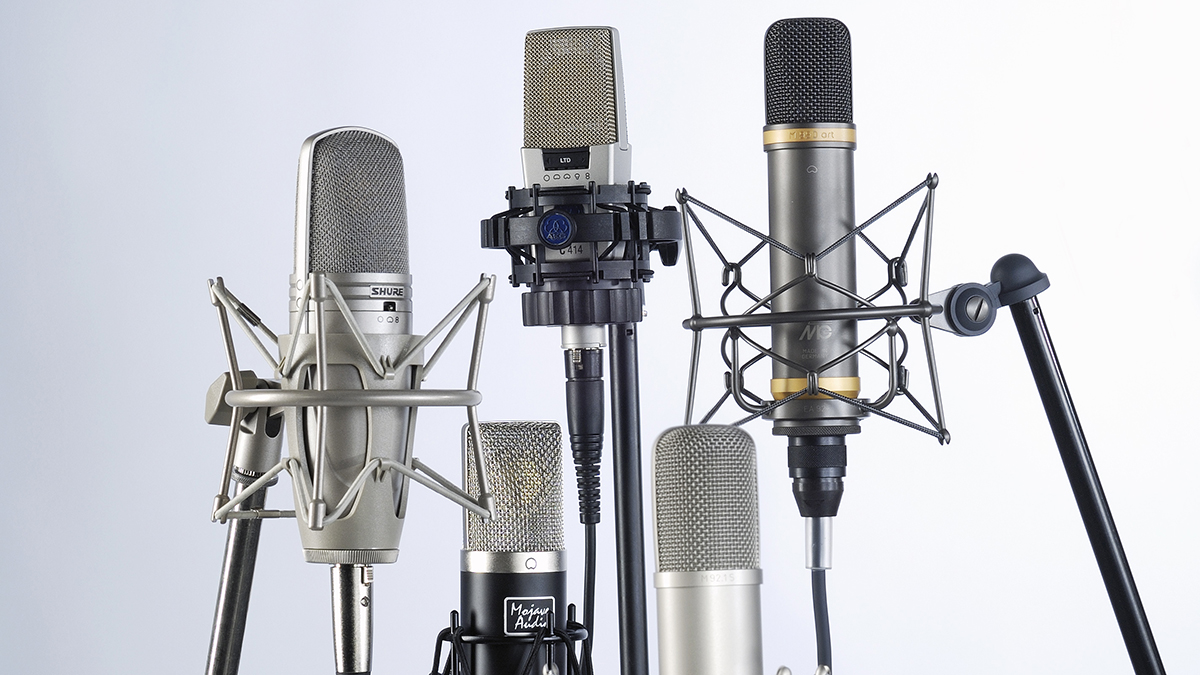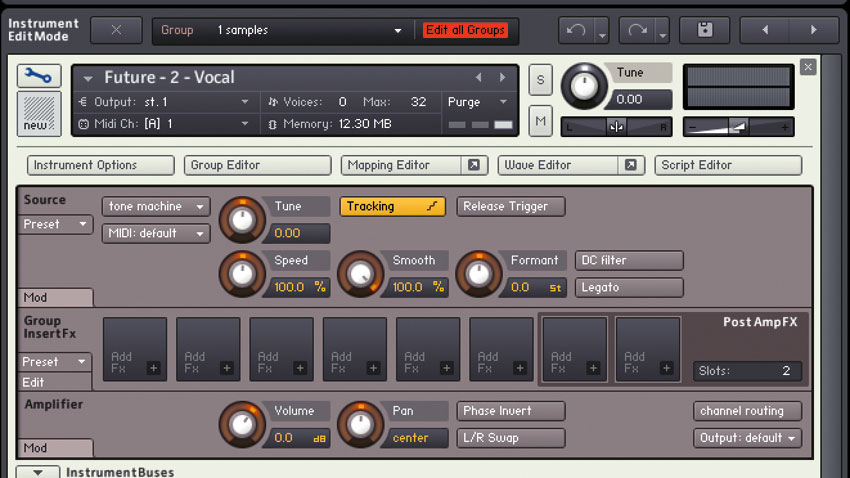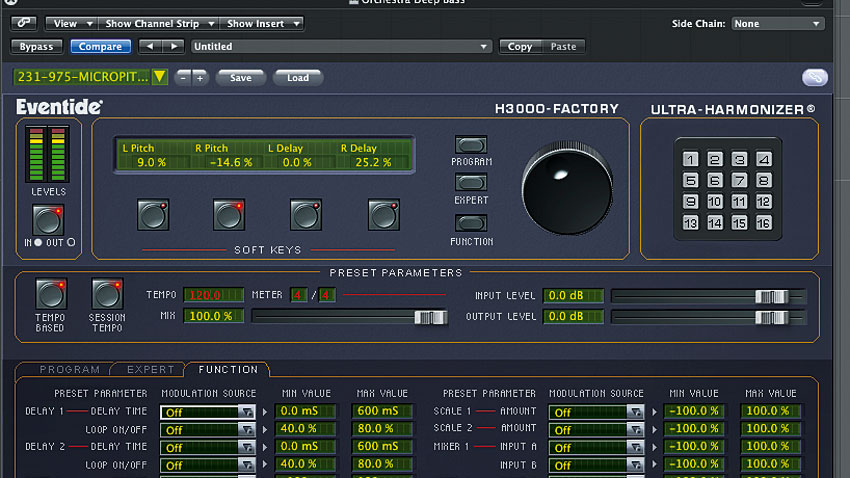10 creative ways to use your voice
It's time to take your voice further out into the universe of sound with some transformative techniques

You might not be the world's greatest singer - or even the best in your street - but that doesn't mean you can't put your god-given voice to good use as a sonic element in your tracks.
With these ten tips, we'll give you plenty of ideas for things you can do with those vocal cords of yours, from shouting and creating FX to making basslines and turning yourself into a choir.
For much more vocal production advice, pick up the September edition of Computer Music (CM233), with its Creative Guide to Vocals cover feature.
1. Oohs and aahs
Whatever your vocal ability, you've almost certainly got it within you to create pro-quality "oohs", "ahhs", "uhs" and shouts. Grab your mic, and for each sound you want to create, try a range of timbres, from quiet and breathy to loud and shouty, then edit it down to just the best ones. Use standard vocal processing like EQ and compression to firm them up, and if you want to disguise the voice, use transformational effects like pitchshifting or formant-shifting; or modulation effects like phasing and chorus. Now drop these utterances into your track for added vocal punch!
2. Oral ambience
Even the plainest vocal can be transformed into eerie sustained pads, atmospheres and ambiences using extreme timestretching. To achieve OTT stretching, repeat the timestretch process multiple times using your DAW; or for smoother results, use a program such as Photosounder or Paulstretch that uses spectral stretching. A similar approach is to use a sampler with granular synthesis and/or stretching built in. Simple sung and spoken vocals will result in pad-like sustains, while pushing your voice to create strange noises will provide more alien timbres.
3. Rise your voice
To create riser FX for a song's transitions, first create a sustained vocal sound - you can use a stretched vocal, as explained in the previous tip, or loop a section of vocal in a sampler. Now bend the pitch up gradually to create a riser - add the usual effects you'd use to create a riser, such as delay/reverb and perhaps a modulation effect. For an obviously pitched riser, you'll want to loop a vowel sound, while a noisier riser can be had from any sibilant part of the vocal.

4. Human FX machine
The human voice is capable of so much more than speech and singing - just take a few minutes to Google the insane human sound effects machine that is Michael Winslow (who you may know better as Police Academy's Sgt Larvelle Jones). So instead of relying on processing, why not use your own voice to mimic FX such as risers, impacts, downers, sweeps and so on? Get them as close as you can in the recording, then use familiar techniques - pitchshifting, timestretching, distortion, reverb/delay, etc - to polish them up, creating totally unique FX for modern production.
Want all the hottest music and gear news, reviews, deals, features and more, direct to your inbox? Sign up here.

5. Kontakt choir
Sing a single note or simple one-note vocal line as best you can, then load it into Native Instruments' Kontakt sampler and enable Tone Machine mode - the vocal is tuned to a constant pitch and its timing is locked. You can now play a melody or chords via MIDI, manipulating pitch, speed and formants independently. Enable Legato mode and new notes will pick up from the current play position. Tweak or automate Speed and Formants to twist the tone on the fly.
6. Bass in your face
Want to turn your voice into a bass sound? Think of the voice here as your oscillator, so find or record a vocal sound that's relatively stable in pitch - though a little vibrato or tremolo can help give it movement - and pitch it down until it's in the right range.
To generate extra harmonics, add distortion in parallel, which you can also treat with EQ and modulation effects, then automate these to create movement. If you need further stability, resample the finished sound to create one rock-solid sample.
7. Boxing beats
You might not be able to spit out an entire beat, but single drum and percussion sounds are quite easy to imitate, and with just a little of the usual processing, you could soon have a complete organic beatboxing drum kit ready to rock. If you want the results to sound less obviously human in origin, try layering sounds together, as you would when stacking samples - for example, a mouth 'click' layered with a 'pop' and a deep sigh could make a heavyweight kick drum. Bind the layers together with bus distortion and compression.

8. Space explorer
Delays and reverbs can have a transformational effect when pushed to extreme settings. Try a 100% wet reverb with a very long decay to turn even a single word into a haunting texture. For delays, pick one with time modulation and filtering, and use high amounts of feedback to create looping, evolving textures. The more movement you can get going on inside the feedback loop, the wilder the results will be - pitchshifting, for example, can make each repeat rise or fall in pitch. Eventide's Harmonizer effects are famous for this kind of thing, but if you're looking to do it on a budget, try a DAW that lets you feed buses back into themselves (eg, in Ableton Live, you can right-click the Send knobs on a Return bus to enable a send back to the same track), with a pitchshifting plugin placed after the delay. Don't forget to place a limiter at the end of the chain to avoid the feedback building up too much. Now, each time the signal goes round the loop, it'll get shifted! Get it right, and you'll create an eerie effect where just a few words can sound like fragmented chatter coming from all directions.

9. It's morphin' time!
Transform your voice into… well, anything, with a dedicated spectral morphing plugin. Zynaptiq's Morph 2, MeldaProduction's MMorph and Epic SoundLab's new Quadrimorph take sound sources and allow the user to smoothly transition between them. This isn't plain old cross-fading, though, as some seriously fancy DSP trickery is used to cross-breed your sounds, combining the qualities of each to create something with elements of both. Try partnering your voice with anything from musical instruments and drum beats to weird sound design textures, found sounds, and those slobbering dog samples from the tip below…
10. Release the beast
So far, we've focused exclusively on the human voice. Forgive us for thinking outside the box a little here, but non-human voices can make an awesome sonic resource, too, with a sound all their own. So, go grab a pack of Schmackos, sit Rover in front of the mic (and seriously, don't forget the pop filter) then do whatever it takes to coax out his ruffest barks and gnarliest growls. Feel free to substitute your pet of choice, so long as it makes a sound.
This unorthodox recording session may require you to place more emphasis on treating the source material - your performer probably won't be accustomed to the nuances of mic control and singing exercises - but get it right with wave editing and effects tweakery, and you could be in possession of some seriously unique sounds.
Computer Music magazine is the world’s best selling publication dedicated solely to making great music with your Mac or PC computer. Each issue it brings its lucky readers the best in cutting-edge tutorials, need-to-know, expert software reviews and even all the tools you actually need to make great music today, courtesy of our legendary CM Plugin Suite.
